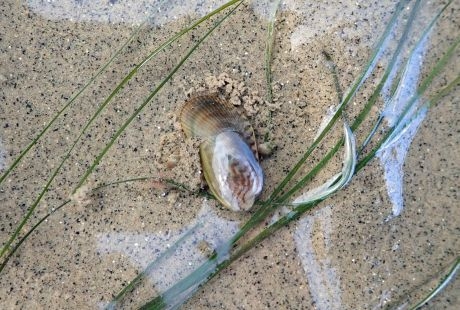

1 January 2019
2 min read
An Asian mussel named after a British naval officer has found its way to Britain and is making itself at home on southern beaches, according to new research.
Peter Barfield, a marine scientist at the University of Portsmouth’s Institute of Marine Sciences, is the first to publish confirmation that the Asian date mussel has made a home in British waters.
The small, fragile mussel is considered edible in China.
Its native range stretches from Siberia to Singapore. In addition to British waters, it has also been found in The Netherlands.
Peter said: “After the initial finding of a single mussel on the beach near Titchfield Haven, in the Solent, a year ago, there’s clear evidence now it is living and feeding on the south coast.
After the initial finding of a single mussel on the beach near Titchfield Haven, in the Solent, a year ago, there’s clear evidence now it is living and feeding on the south coast. It’s listed on invasive species databases as ‘one to watch out for’, but whether it thrives here or causes problems for British native species depends on a wide range of factors. It would be prudent to keep an eye on it.
Peter Barfield, Marine scientist at the Institute of Marine Sciences
“It’s listed on invasive species databases as ‘one to watch out for’, but whether it thrives here or causes problems for British native species depends on a wide range of factors.
“It would be prudent to keep an eye on it.”
The Asian date mussel, or Arcuatula senhousia, was first found in China, and was described in 1842 by William Benson. It is believed he named it after Sir Humphrey Fleming Senhouse, a British naval officer who died in Hong Kong in 1841 during the infamous Opium War between Britain and China.
It is coloured olive and brown, and it can be distinguished from British native mussels by zig-zag markings on the shell.
In UK waters, it has been found living in soft sediment and it is known to also attach to hard substrates, such as other shells beneath the sea and up to the high water mark.
If that population had slowly made its way northwards, it’s reasonable to assume it would have been spotted somewhere, by someone. That no sightings have been recorded does suggest those found in British waters may have been transported here via, for example, shipping.
Peter Barfield, Marine scientist at the Institute of Marine Sciences
Until this year, the previous closest known sighting of the mussel was in the Bay of Biscay in 2009.
Peter said: “If that population had slowly made its way northwards, it’s reasonable to assume it would have been spotted somewhere, by someone. That no sightings have been recorded does suggest those found in British waters may have been transported here via, for example, shipping.”
Creatures known to prey upon the mussel include sea birds, fish, crustaceans and snails.
“Invasive species are one of the greatest threats to biodiversity on the planet, so another species establishing in the UK is of serious concern and something we need to monitor closely,” said Dr Gordon Watson, who is supervising Peter’s research.
Invasive species are one of the greatest threats to biodiversity on the planet, so another species establishing in the UK is of serious concern and something we need to monitor closely.
Dr Gordon Watson, Reader in Marine Zoology
